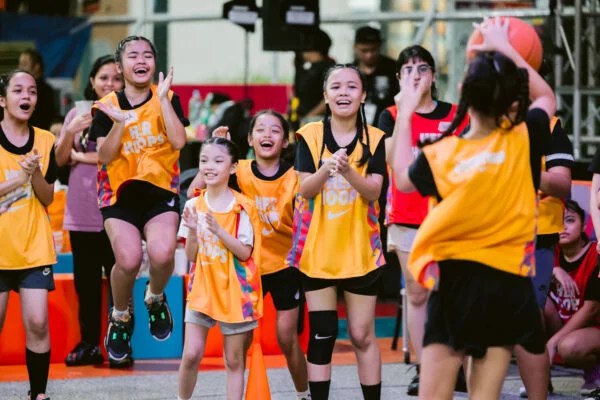Share this @internewscast.com
There’s no arguing that it’s an exciting time for women’s sports.
Earlier this year, the FIFA Women’s World Cup saw record-breaking attendance numbers—and a record-breaking number of goals scored. The popularity of both the Women’s National Basketball Association (WNBA) and National Women’s Soccer League (NWSL) seem to be reaching a fever pitch. Ultrarunner Courtney Dauwalter had even non-runners watching in awe via social media as she won three iconic 100-plus mile races in just 10 weeks this summer. And just a few weeks ago, the University of Nebraska volleyball team played a match in a football stadium and filled it to the brim, setting the world record for attendance at a women’s sporting event.
But to be someone who cares about women’s sports is to be constantly celebrating these victories while lamenting how far we still have to go. WNBA and NWSL players, for instance, still make a fraction of the salaries their NBA and MLS counterparts bring home, and women’s sports stories make up only four percent of media coverage. But what’s perhaps most alarming is that girls still drop out of sports at double the rate of boys by age 14, according to the Women’s Sports Foundation (WSF). Those girls aren’t just missing out on the fun of sport, or the chance for college scholarships or a career as an athlete; playing sports is also related to better body image and self-confidence, higher levels of family satisfaction, better health outcomes and life skills like teamwork and leadership, WSF reports.
Some of the most common barriers to sports for girls are obvious: The lack of opportunities, social stigma, fewer role models. But one that you may not guess? The dearth of good coaches—and in particular coaches who have been specifically trained to keep girls in the game.
“A coach can make or break you, especially for women,” says Mariana Lopa, the managing director of Girls Got Game, a Filipino nonprofit that aims to empower young women through sport by surrounding them with powerful female coaches and role models. I met Lopa on a recent visit to Manila with Nike, as part of their work to increase girls’ access to sports—both by providing them with more spaces to play, and better coaches to facilitate that play.
The Philippines has a fervor for basketball, to say the least, and yet, there is no professional women’s league, and at neighborhood courts where local stars are born, women and girls are often either implicitly or explicitly unwelcome, or forced out.
“There are so many courts in the Philippines—problem is, everyone loves to play basketball,” says Lopa. “So to get time on the court, my experience was that I had to be there right after lunch, or else the boys would arrive after school, and you get eased out.” Other players I spoke to said it’s common for girls and women to arrive at the courts at the crack of dawn just to get some playing time in.
Nike’s answer to this problem? The Courtyard, an epic, colorful space in one of Manila’s most vibrant neighborhoods featuring two and a half courts made of recycled Nike sneakers. The Courtyard is home to a program called Her Hoops, dedicated time where only girls and women are allowed on the court. “For Nike to create The Courtyard and have specific hours for girls is huge, because nobody can interrupt our playing time,” says Lopa. Nike is also working with Girls Got Game to run free basketball camps for girls of all ages at the Courtyard, because you can give girls free reign of the court, but without supportive coaches to foster their skills and love of the game, they’ll still be left at a disadvantage.

Of course, it isn’t just in the Philippines that girls deserve more from their coaches: Nike’s recently-published Coaching Girls Guide, created in partnership with the Center for Healing and Justice Through Sport, lays out guidelines intended to keep girls playing sports, and has already been used to train more than 17,000 coaches worldwide. Here’s what I learned about coaching girls from the guide and from my time at The Courtyard.
Read Related Also: ‘I caught Covid for a second time and now my foot is numb’
It’s key to understand *why* girls need what they need from their coaches
When we say that girls need something different from their coaches, we run the risk of perpetuating dangerous stereotypes about girls and sport, like that they aren’t as naturally gifted as boys, so they need more help, or that they’re somehow delicate or overly-sensitive, and need to be coddled.
These stereotypes are not true. But, the fact that they still exist speaks to why so many girls drop out of sports in the first place. Even coaches with the best intentions may accidentally send the wrong message. What girls actually need are coaches who actively resist these ideas by focusing on girls’ talents and skills, and showing them how physically and mentally strong they truly are.
When coaches are intentional about modeling that girls belong in sport just as much as boys, they can make a powerful impact, especially on young players who haven’t yet digested as much stigma. “With these girls, it’s fresh—they have no preconceived notions of what basketball is,” says L.A. Mumar, coach of one of the Philippines’ top women’s college basketball programs at Ateneo de Manila University. “They think, this is normal, I can play ball.”
Girls bring their full selves to sport
Because girls aren’t always supported in their love of sports in the way that boys are, personal connections between coaches and players are all-the-more important, Nike points out in its guide. Lopa says that, in her experience, this looks like understanding that girls often bring their whole selves to practice. “When you have a coach that has a good enough relationship to the player, they can say, Hey, I know you’re going through this, but can I have your attention for 40 minutes?” she says. “And then after 40 minutes, let’s talk about it.”

Language matters
“Without meaning to, we are all responsible for perpetuating a culture of masculinity in sport through language,” reads Nike’s Coaching Girls Guide. It may seem obvious or unimportant, but even referring to girls as “guys” can feel unwelcoming. (One study cited by Nike found that in a classroom where teachers called all the students “guys,” girls were significantly less likely to raise their hands because they thought the teacher wasn’t talking to them.) Name-dropping women’s professional teams and role models across the gender spectrum is also key, according to Nike.
“It makes girls feel more comfortable,” says Lopa, who regularly uses Nike’s guide to train Girls Got Game coaches. “It makes them feel like, oh, this program is specifically for me. And I’m gonna keep wanting to go back.”
The stakes are different for girls
In the United States, girls who love sports can dream of a career in a pro league like the WNBA or the NWSL. Yet even then, they’re unlikely to make enough money for it to be their full-time job. In many countries like the Philippines, even that’s not an option. “It’s so easy for girls to quit because there’s nothing to look forward to,” says Lopa. “It’s so easy to say—I’m done, I’m just going to study.”
With athletes who can’t dream of becoming the next Lebron James in the way that boys can, girls’ coaches must work twice as hard to keep girls playing—and to demonstrate the many benefits of staying in sports that have nothing to do with someday making it as a pro.






